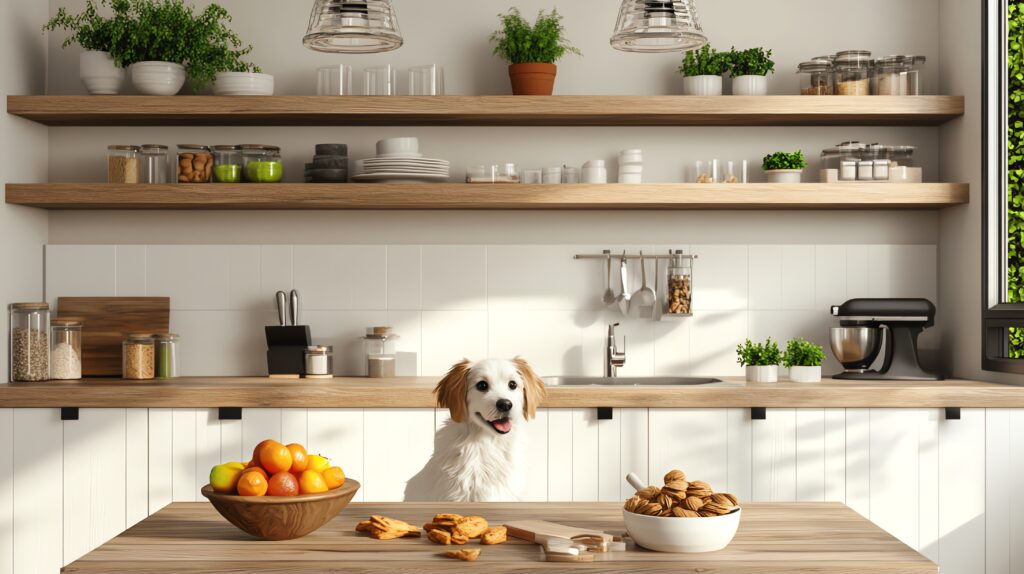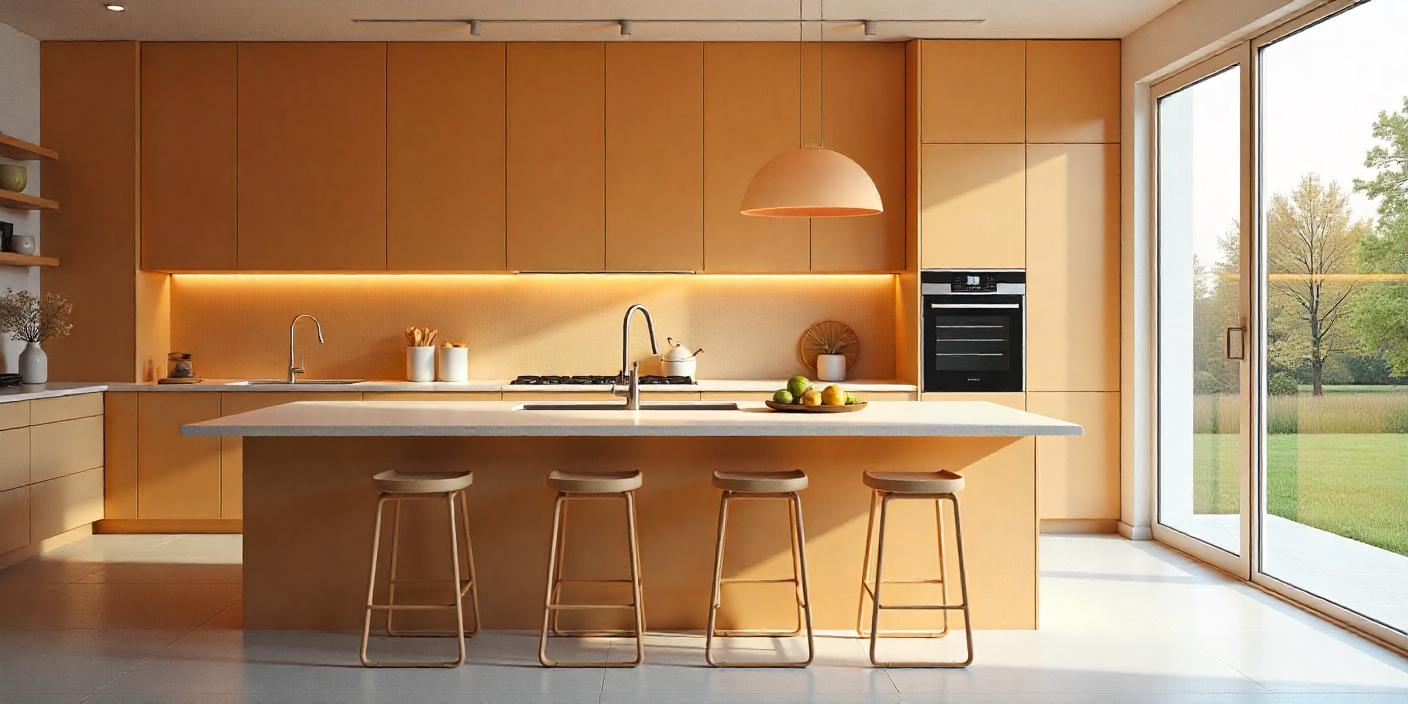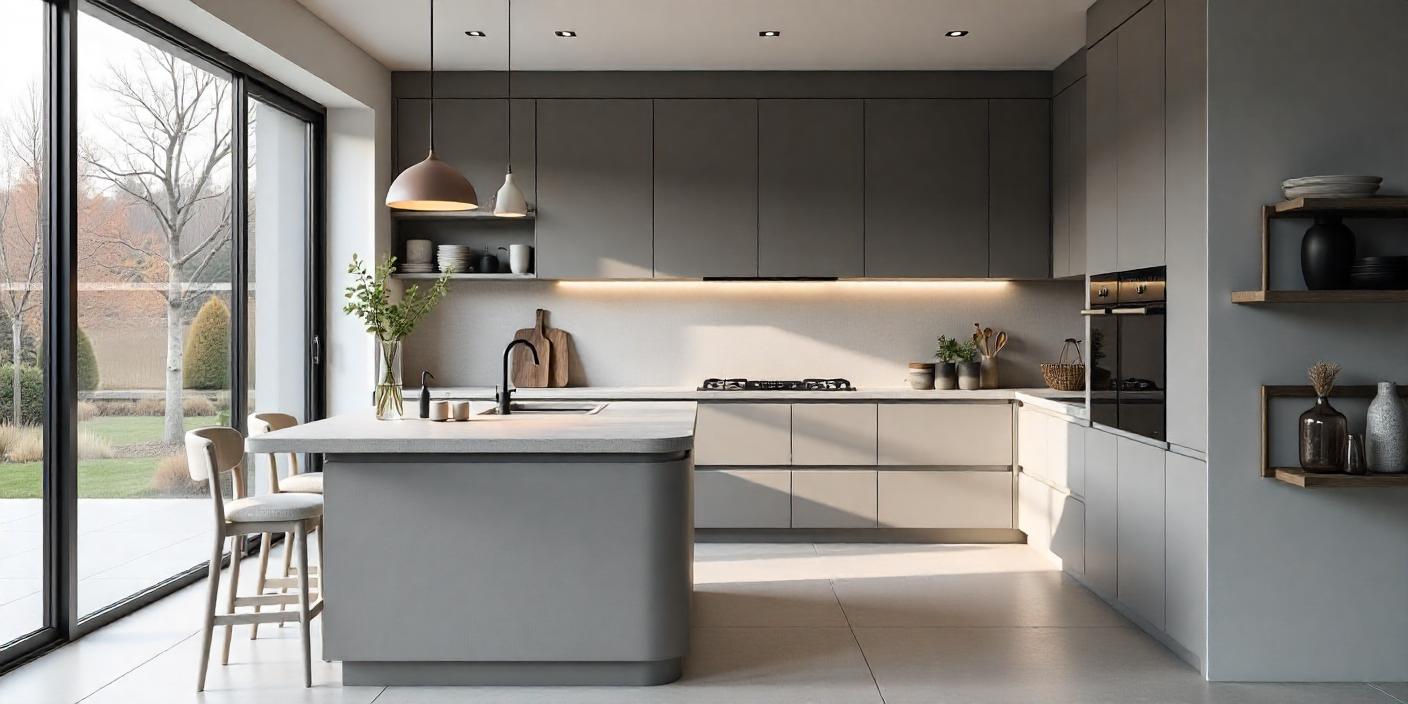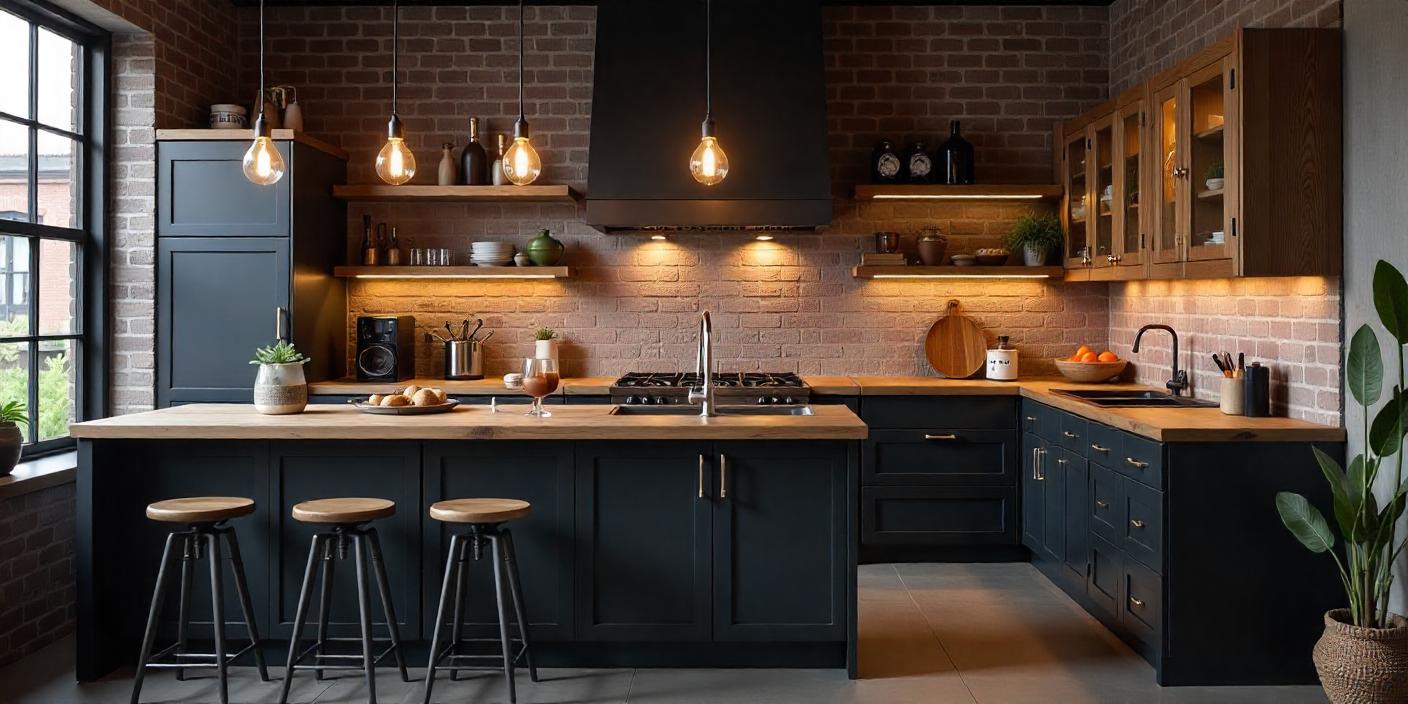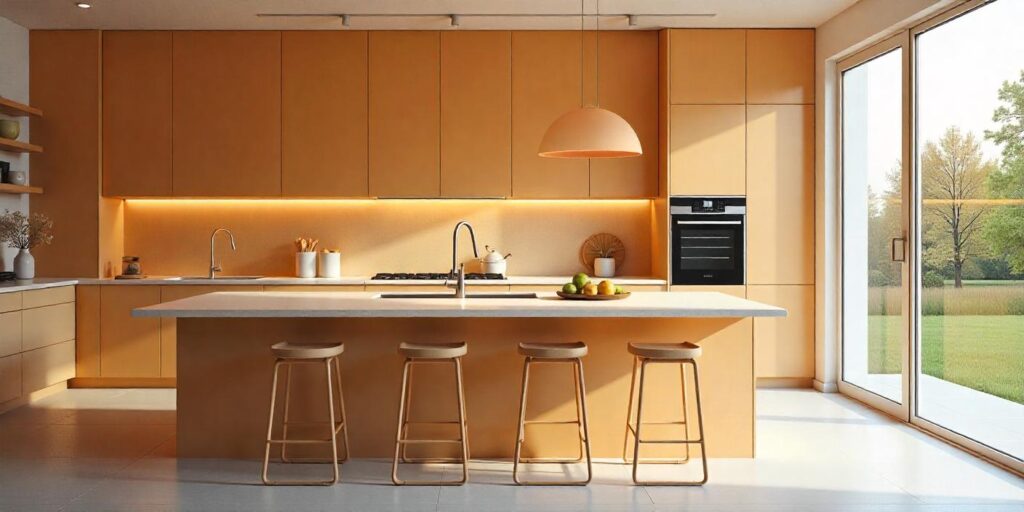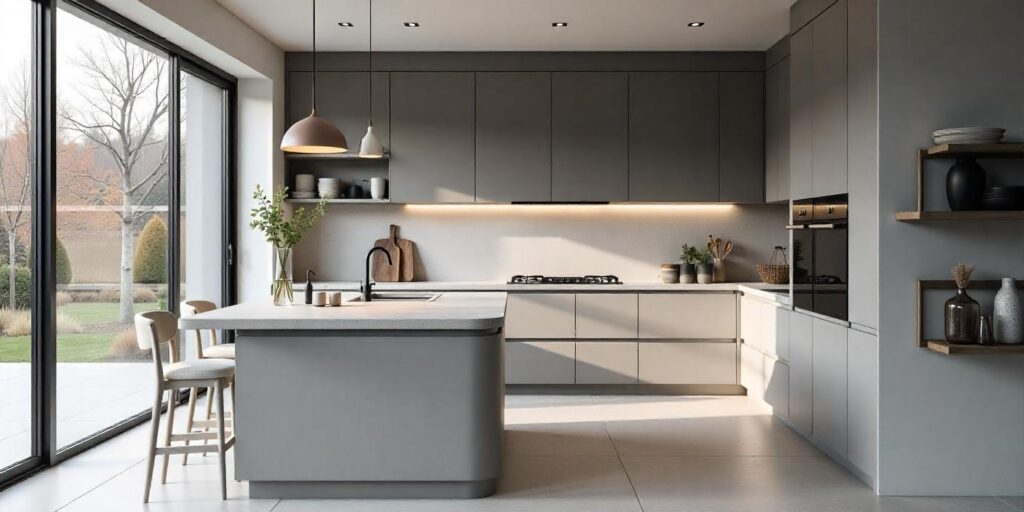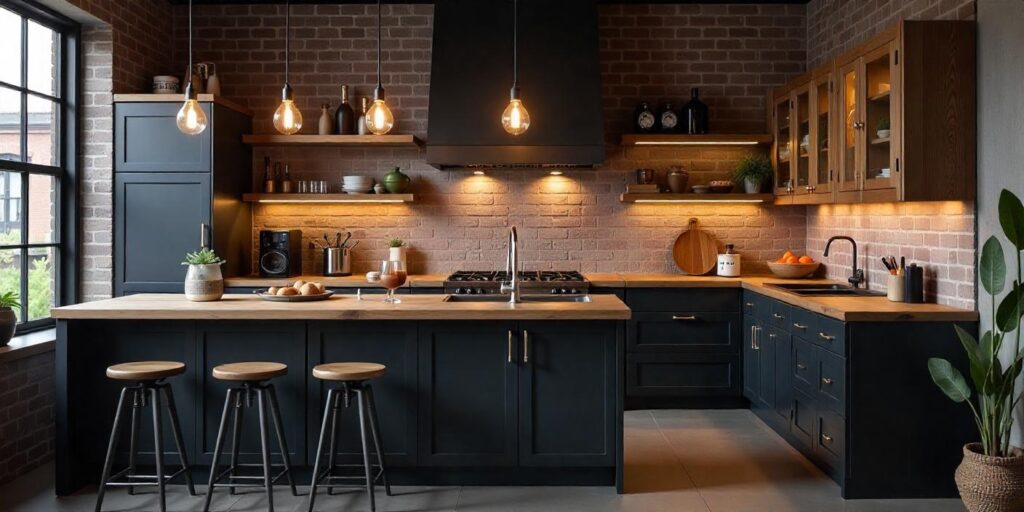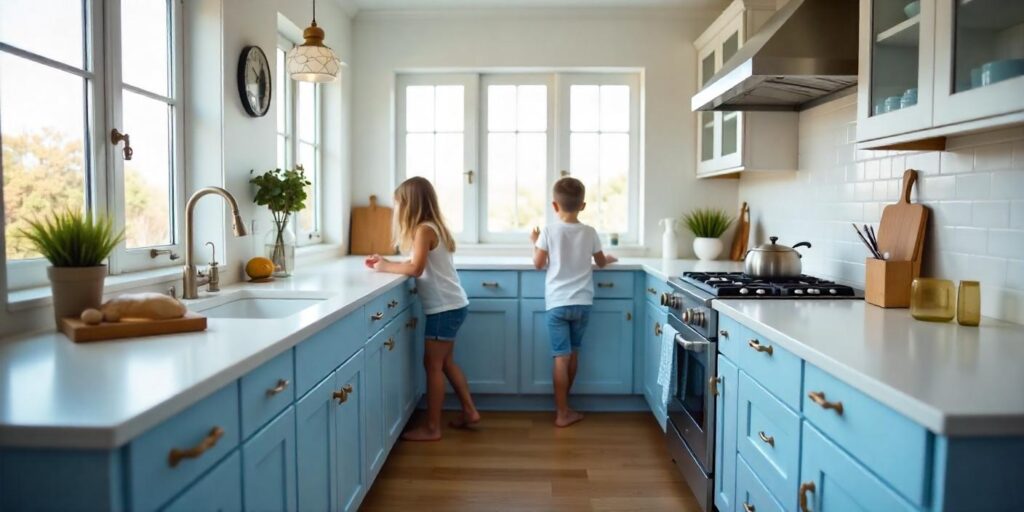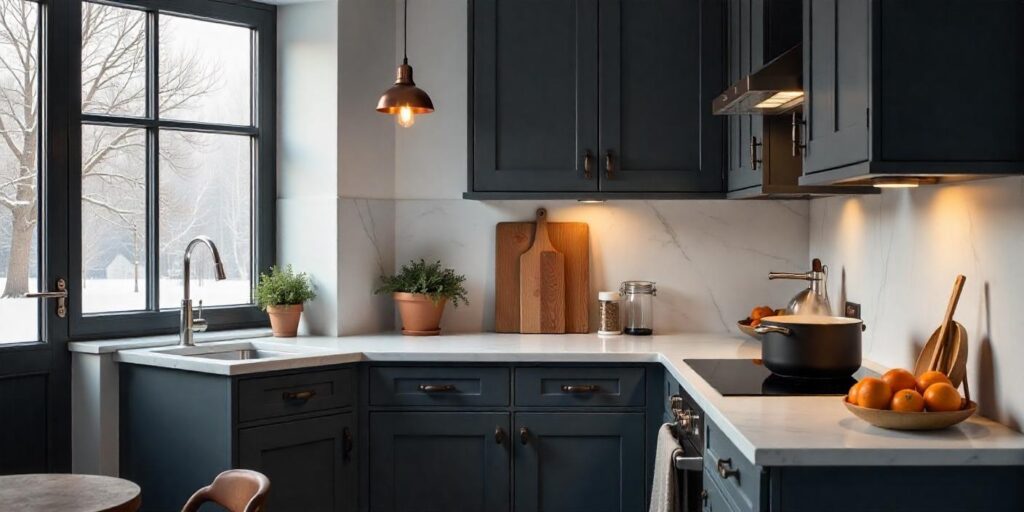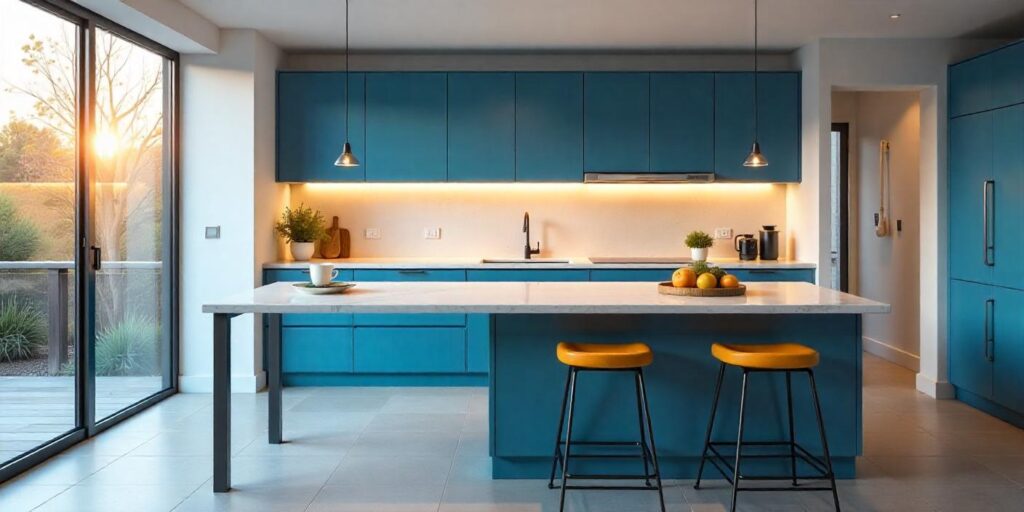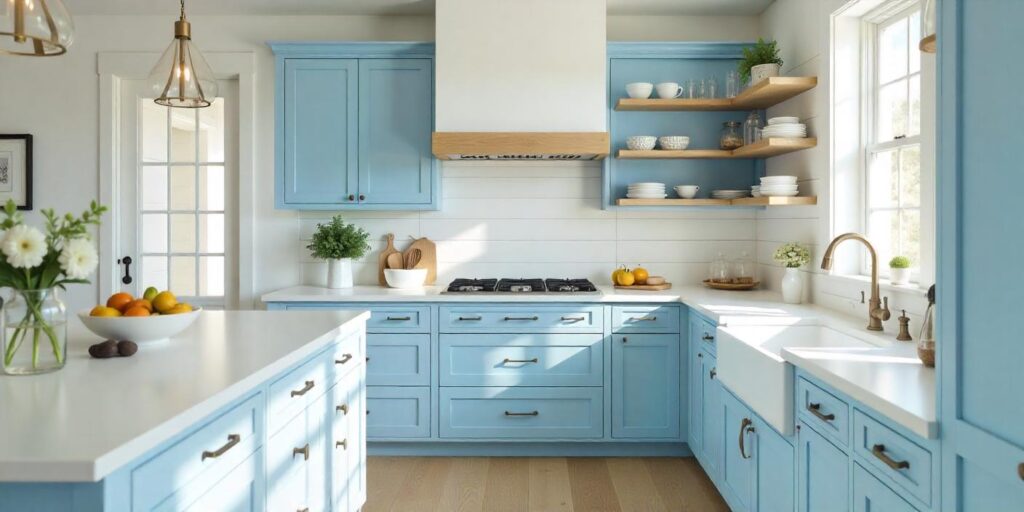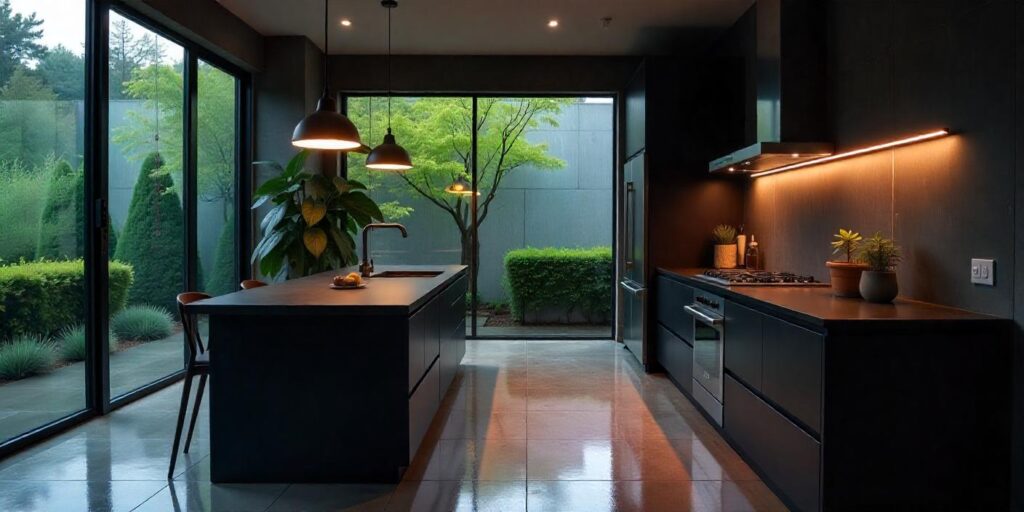Kitchen design for pets is a way to create a space that can harmoniously accommodate your beautiful fur-babies while ensuring their safety and product durability. Here are 5 aspects that should be taken into consideration by home owners.
Kitchen Design For Pets #1: Having Durable Flooring Material
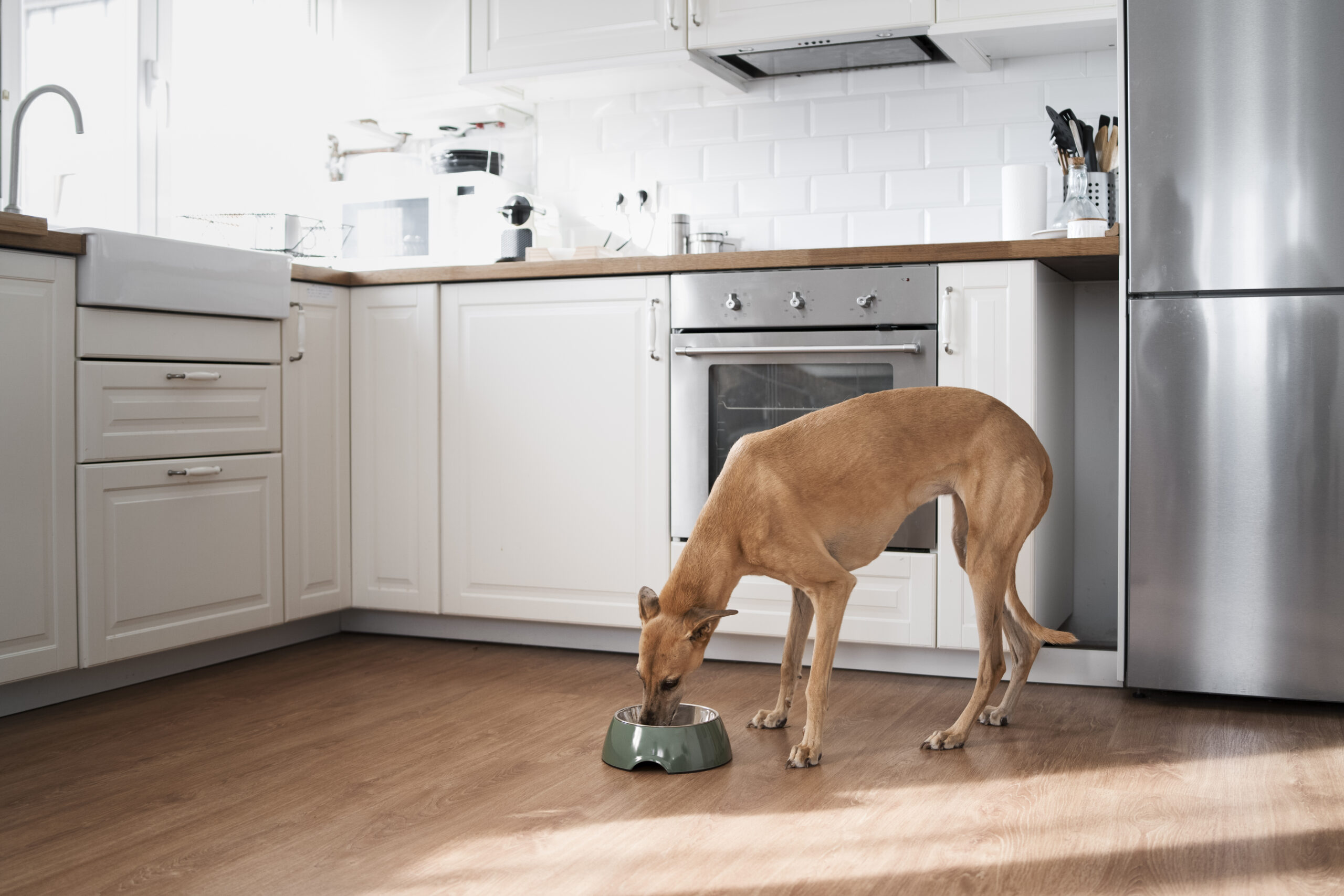
In the kitchens of many pet owners, durable flooring plays a great role in the design — this makes the area practical and durable. Sharp claws can be very harsh on the floor surface. Some scratch resistant materials would include tile, stone or luxury vinyl plank. This ensures that the flooring can withstand daily activities with the pets without showing any damage.
Needless to say, these are easy-to-clean materials and resilient — an essential choice in hygiene if you have pets. Spills, accidents and food messes can happen but at least on non-porous and water-resistant flooring such as porcelain tile, they will not leave stains or water damage — a quick clean-up is possible.
Moreover, one important aspect for households with pets, especially older ones, is the specification of non-slip surfaces. This may provide a better grip for your pet, enabling it to avoid slipping and obtaining potential injury. This aspect is quite helpful for pets that usually suffer from joint issues or even arthritis. Another benefit of heavy-duty flooring is its ability to handle traffic. From dogs running in and out of the kitchen to cats sliding after toys, high-traffic areas require flooring that will not degrade anytime soon.
Comfort could also be another factor that pet owners might want to consider. Though durability and resistance are the most vital concern, some types of flooring actually have a bit of give and some kind of cushioning to them such as cork or rubber. This is a bit easier on pets’ joints and could be an option to consider. Such materials still offer durability but add a level of comfort — making the kitchen a more friendly place for both pets and their human companions. It also allows installation of durable, pet-friendly floors that provide a beautiful and practical kitchen, satisfying the needs of all pets.
Kitchen Design For Pets #2: Using Easy Maintenance Surfaces
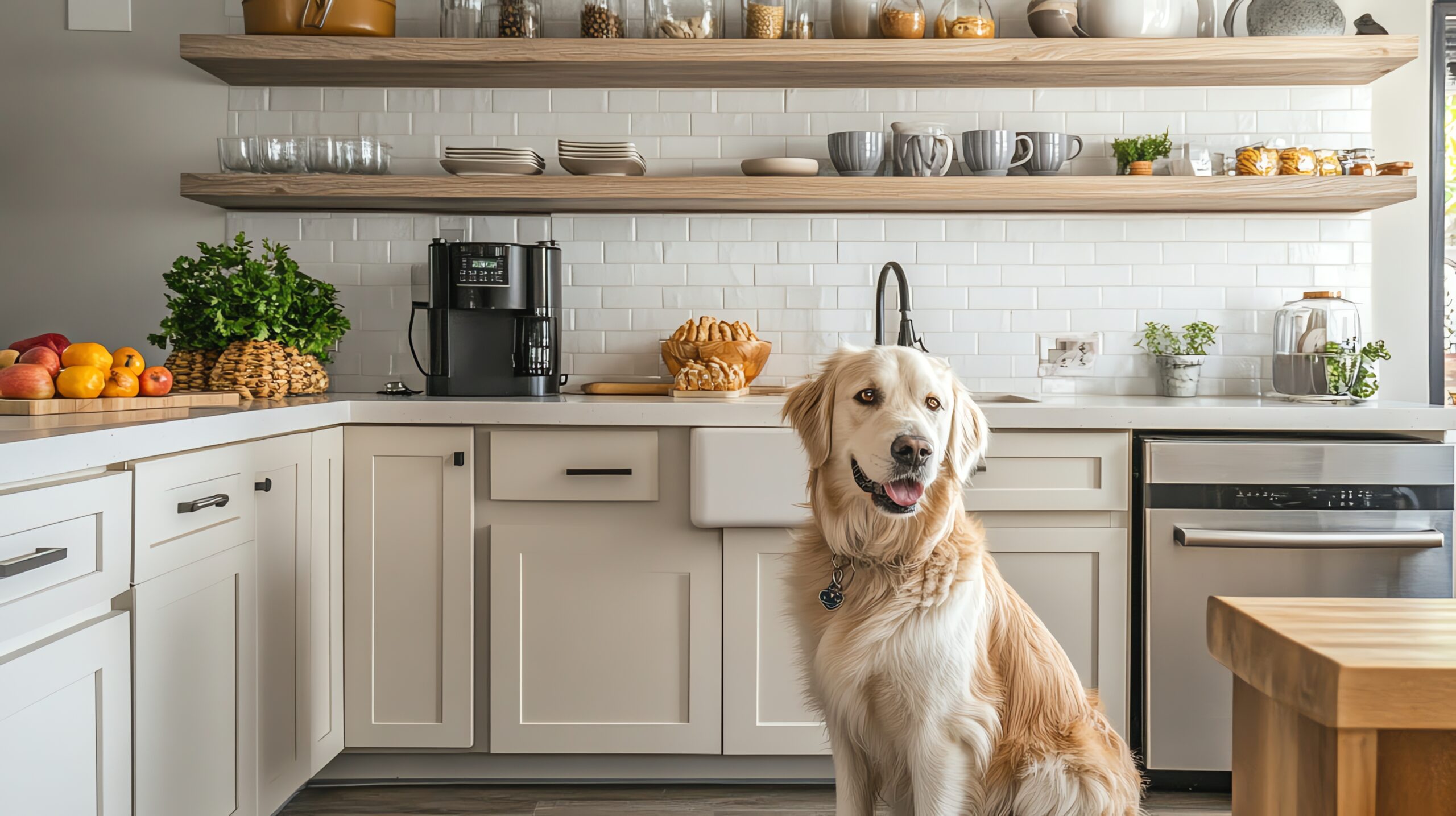
With pets, easy cleaning becomes one of the major focuses for many in designing their kitchen. Pets bring extra mess from fur shedding to the occasional spills and accidents and choosing materials to make cleaning a breeze often saves time and keeps the area hygienic. The best options for a pet-friendly kitchen include non-porous surface types such as quartz or Silestone countertops. These are resistant to stains, scratches and moisture — making them ideal for everyday use with pets. They also contain a smooth surface which allows spills, dirt and other remnants of pet food to be wiped out in minutes without giving any chance for bacterial growth.
Besides countertops, it is also worth finding flooring that is easy to clean. Tile and vinyl floorings are also pet-friendly due to scratch resistance and ease of mopping or sweeping from fur, dirt or spilled water from your pet’s bowl. As for cabinetry, finishes such as laminate or treated wood will resist dirt and fingerprints and are a big help. Durable installations add to this element with the capability of handling any type of mess without permanent damage to the surfaces themselves.
Having a pet feeding station inside the kitchen recessed under the counter would help keep messes contained for easier cleaning. Easy access storage for pet supplies such pull-out bins for food and treats helps keep clutter organised and reduces the chance of spills. By considering functionality and ease of cleaning, home owners can create an appropriate kitchen space for pet owners to include their pets without compromising on cleanliness and convenience.
Kitchen Design For Pets #3: Incorporating A Pet Station
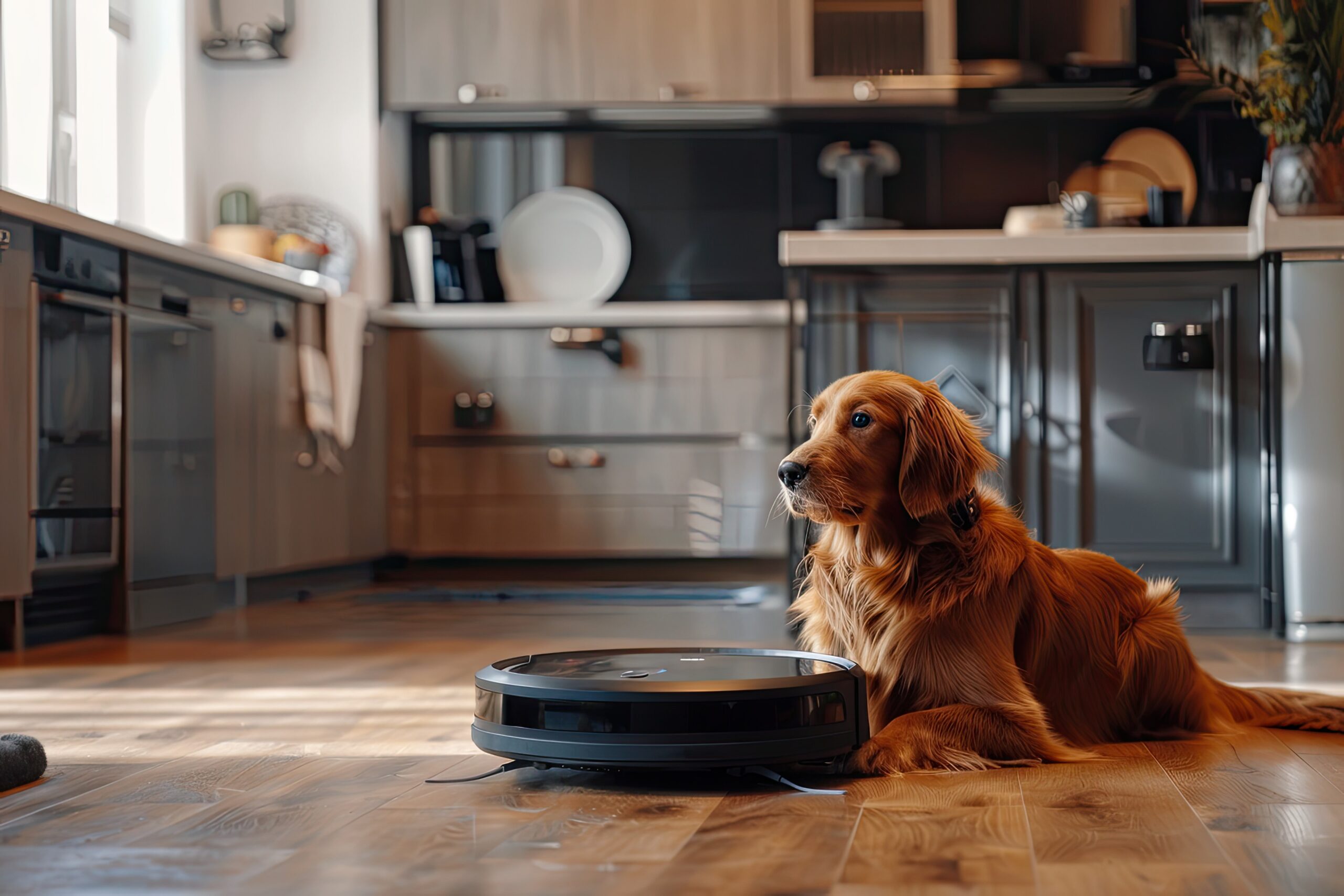
A pet station and area is an innovative solution in designing a kitchen — catering to the needs of a pet owner while improving both functionality and aesthetic perspectives. The nook provides a place for your pet to join in on family activities while still being safe and comfortable. Ideally, this area could be located in a nook or against a wall and would include a plush bed or mat for your pet in an appropriate colour for the kitchen.
Bedding should have washable and durable fabric to make upkeep simpler. Similarly, removing the zone from highly trafficked areas minimises accidents. With built-in storage for pet food, treats and even toys, the kitchen remains neat and tidy. Cabinets or pull-out drawers in attractive finishes store these items conveniently yet unobtrusively.
A feeding station set comfortably off the floor eliminates messy spills by letting them dine in style — completely free of encroaching into daily kitchen actions. Non-slip flooring prevents any potential accidents within the pet zone. The add-on pet gates limit access to certain areas in the house especially where food is prepared. Ensuring that the pet zone has easy to clean surfaces such as non-porous countertops and durable flooring-maintenance will become easy.
Thoughtful design elements such as natural light and cosy nooks can be integrated to invite appeal for both the pet and the owner. A well-designed added pet area in the kitchen augments its functionality — offering a harmonious living environment where pets can thrive with human beings. Such a perfect balance between practicality and style allows pet owners to use their kitchen space without relenting on anything concerning the needs of their pets.
Kitchen Design For Pets #4: Having Pet Storage Areas
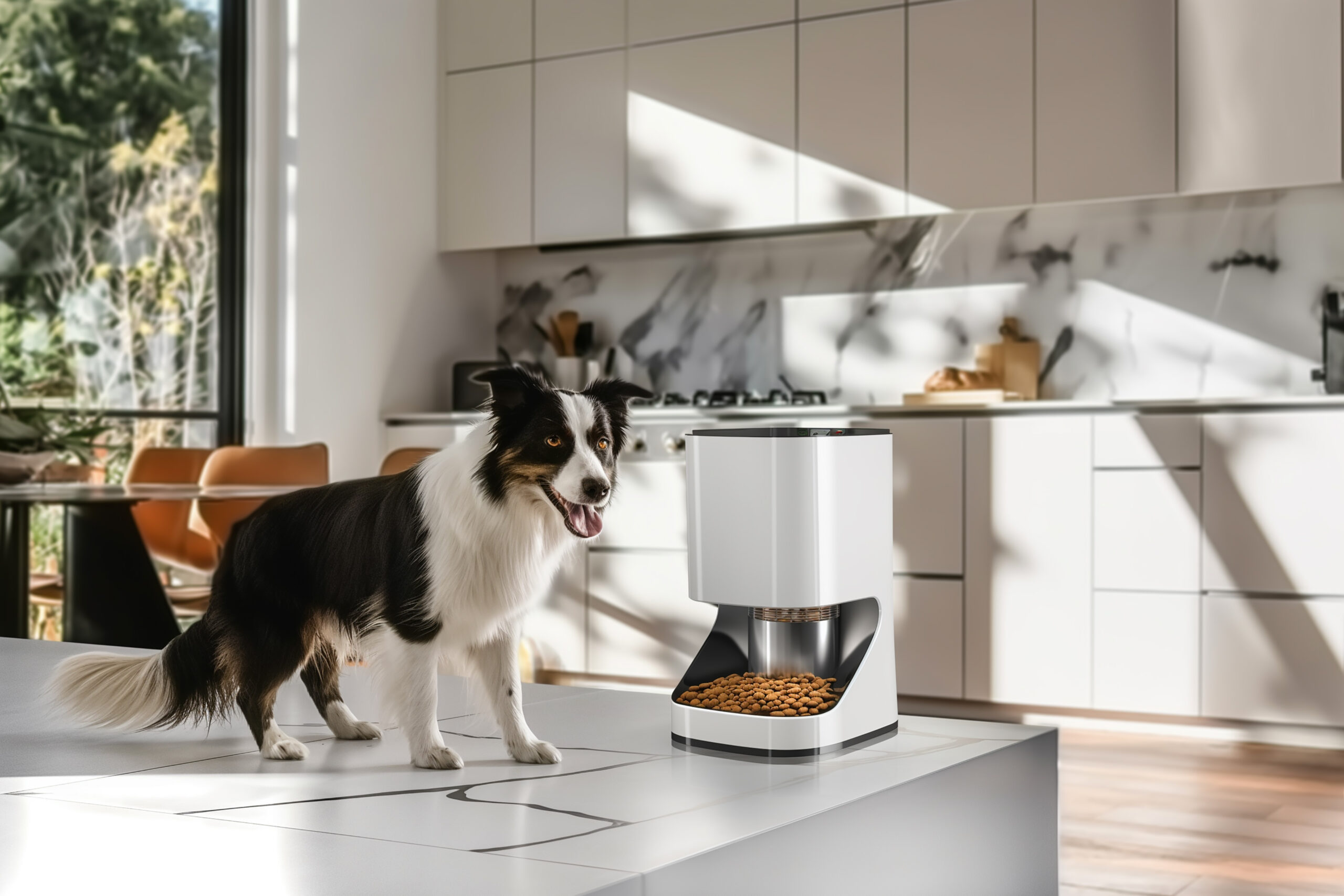
Some interior designers have also been incorporating the idea of hidden storage for pets — allowing their owners to have their needs met without cluttering up the kitchen. There is a pull-out drawer and cabinet suitable for comfortably storing their food, treats, toys and grooming materials. Such a nook keeps all the pet essentials hidden, cleans up the countertops and leaves much more room for aesthetically correct kitchen surroundings. For example, a dedicated drawer near the feeding station can store food bowls that will be easy to get in and out during mealtime while everything is nicely contained.
Other uses for such cabinets include airtight containers that can keep pet food fresh, minimising odours and reducing the nuisance of pests in the kitchen. Moreover, hidden storage solutions can be safer for your pets — will not have the opportunity to rummage through bags of food or knock over open containers. Stylish cabinetry blends into the overall decor of the kitchen and does not detract from the design aesthetic.
Hiding space for leashes, collars and even cleaning supplies for pets makes the routine easier on home owners who have quick access should it be time for walks or cleaning up after playing. Utilising vertical space and creating multi-functional areas such as combining a pantry with pet storage allows a home owner maximise their kitchen’s efficiency without sacrificing style. All in all, secret pet storage is a practical and considerate design feature that fosters a harmonious living situation between pets and owners alike — encouraging organisation while improving the overall functionality and aesthetic appeal of a kitchen.
Kitchen Design For Pets #5: Installing Durable Cabinets
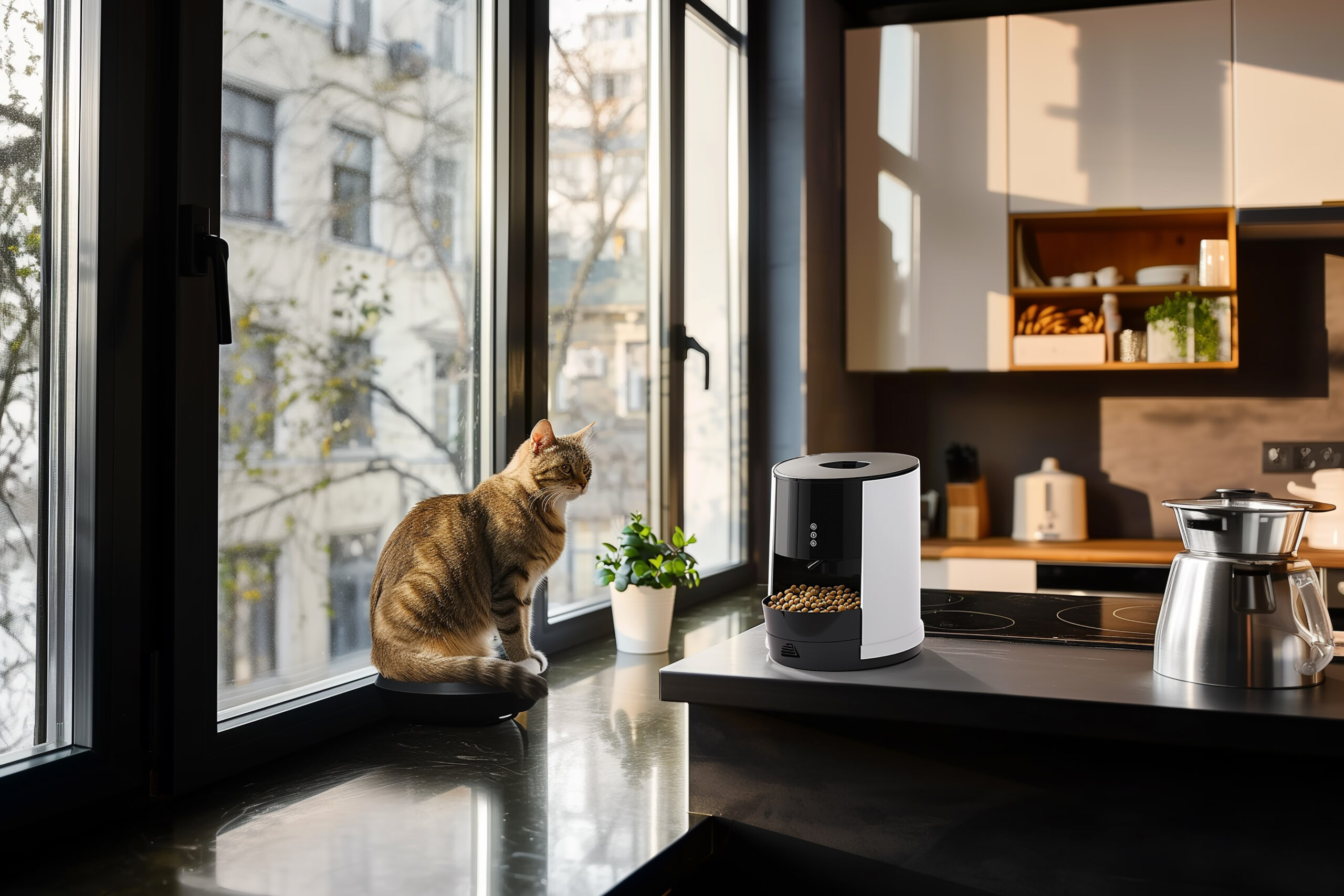
A kitchen for a pet owner would have to be designed with durable cabinets that can endure the stresses of daily life. That would include scratches, stains and other general wear associated with pets — cabinet materials have to be robust yet easy to maintain. High-quality options include BWR plywood and laminate that are the best options when the capability to resist moisture and scratches is a factor. For that matter, these materials can handle the unavoidable occasional paw swipe or a hit by a wagging tail and yet the cabinets will still look great after many years.
In addition, finishes that are resistant to stains and easy to wipe clean should be used in order to lessen the maintenance and make the kitchen fresh despite the inevitable mess with pets. The installation of child-proof locks in the cabinet will prevent pets from accessing the food or cleaning supplies — adding a safety element to pet-proofing cabinets. Additionally, another aspect could be tailoring the cabinet layout for specific storage solutions of pet food, treats and toys to make an even more organised and accessible system. For example, pull-out drawers or cabinets fitted with a pet feeding station make mealtime easier and less messy.
This investment in durable cabinets pays off in the long run, upgrading not only the functionality of the pet-friendly kitchen but also its style — making possible for a pet owner to enjoy a stylish yet practical space. A kitchen for pets, if thoughtfully designed into the cabinetry, can answer the needs of the owner’s beloved companions without sacrificing an attractive and efficient cooking environment.
Sign Up For Kitchen Design Ideas
Join over 5,000 homeowners subscribed to our newsletter!

